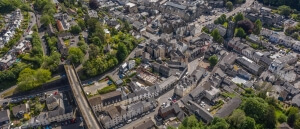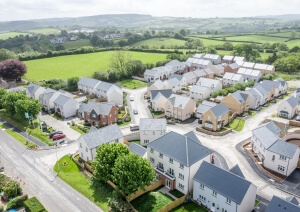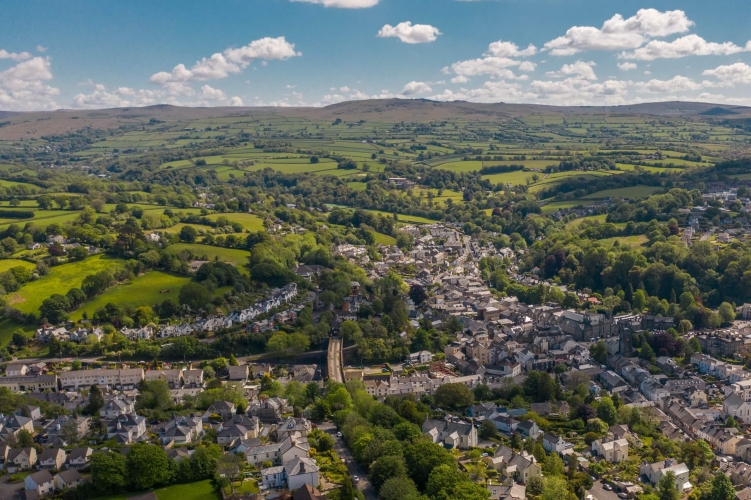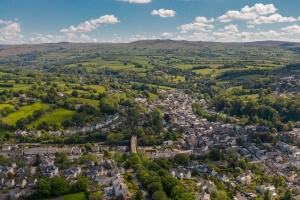Dig deeper into Tavistock’s past
The exquisite town of Tavistock is a world heritage site due to its links to the area’s rich mining history. It’s also the largest market town in West Devon and derives its name from the River Tavy which flows through the town centre.
King Edward I’s Stannary Charter established Tavistock in 1305, along with Ashburton and Chagford. The three became known as Devon’s original Stannary towns, with a monopoly on all tin mining activities in the county.
For more than 900 years of its history it was a town dominated by a medieval Benedictine abbey and the Dukes of Bedford and in time grew to become a leading centre for wool trading.
We’ve explored some of Tavistock’s historical gems that are well worth a visit if you’re taking a day trip to Tavistock, looking to move to the area, or live in one of our new homes at Broadleigh Park.
Mining
Putting it on a par with global wonders such as the Taj Mahal and The Great Wall of China, Tavistock was designated as part of the Cornwall and West Devon Mining Landscape in 2006 and recognised as a United Nations Educational, Scientific and Cultural Organisation (UNESCO) World Heritage site.
Tavistock is regarded as the eastern gateway to the Cornwall and West Devon Mining Landscape, which was instrumental in transforming the town’s economic fortunes during the 19th century after the discovery of rich reserves of tin, copper, and other metals in the surrounding landscape.
Tavistock Museum, which is situated in the historic Court Gate and is free to visit* provides the opportunity to delve deeper into the town’s mining story and other aspects of its rich history.
Pannier Market
Markets have taken place in Tavistock continuously for more than 900 years after the ancient Pannier Market was granted a Royal Charter by Henry I, way back in 1105. Along with the mining connection, the weekly markets contributed to the town’s prosperity due to the location being at the centre of a large farming district.
Today, the market hosts a diverse mix of both regular and occasional stallholders, including potters, artists, quilters, card makers and woodturners. It is also home to a calendar of special events, such as charity and pre-Christmas markets.
Buckland Abbey
Once the home of Sir Francis Drake and fellow seafarer Sir Richard Grenville, Buckland Abbey is a National Trust attraction just a few miles from Tavistock. The Abbey dates back more than 700 years and was first built by Cistercians who farmed the Estate.
Along with the house and surrounding meadows, orchards and woodland, one of the highlights is the Great Barn, a medieval structure originally used as a Tithe barn to store wool, fleeces, cattle hides and crops. The Abbey gardens are also famed for their riot of bluebells in spring.
If you’re planning on a trip to Buckland Abbey, check out the ticket prices here.
Morwellham Quay and Tavistock Canal
Dating back to the 10th century, Morwellham Quay – an integral part of the tin and copper mining industry that flourished around Tavistock – is now an outdoor museum dedicated to telling the story of its industrial heritage.
The history of the quay is tied to Tavistock Canal, the waterway that revolutionised the transportation of copper ore to market in the 18th century. The 4.5-mile-long canal opened in 1817 and offered a faster, more convenient mode of transport than packhorses.
Prices to visit Mowellham Quay start at £13.95 for an adult*, £12.95 for a child* and infants aged two and under can visit for free*. Prices are higher for Mine Train Adventure tickets*. Find out more here.

If you’re interested in learning more about the rich history of Tavistock and its surrounding areas, you may also want to visit:
To find out more about our homes at Broadleigh Park, situated within walking distance of the centre of Tavistock, click here.

*Correct at the time of writing













